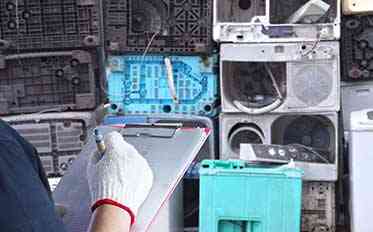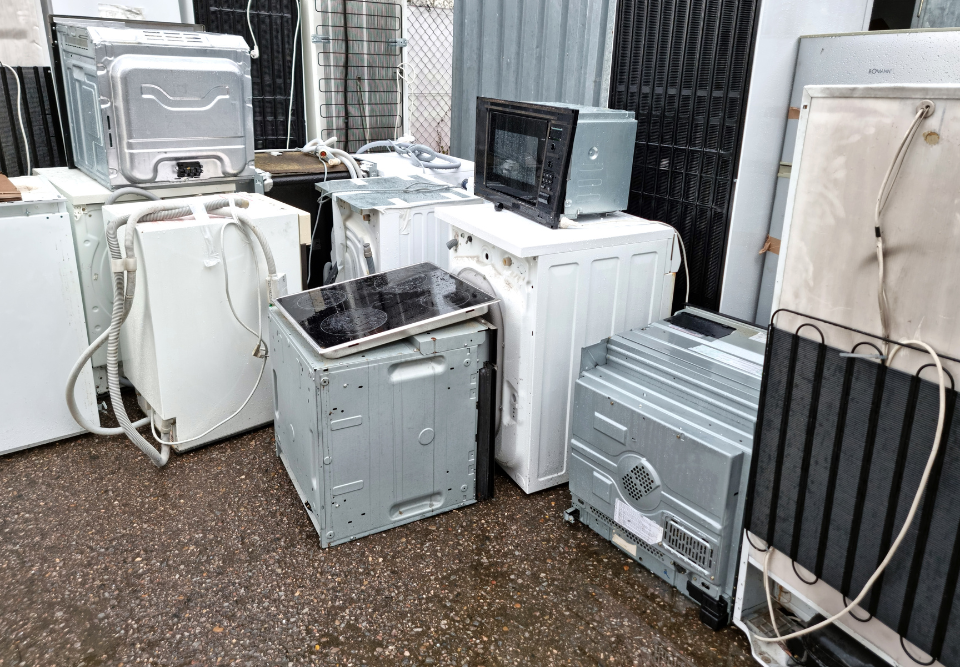
Best Ways to Handle Commercial Junk Removal During Renovations
August 18, 2025
How Junk Removal Improves Workplace Safety
August 18, 2025How to Safely Dispose of Old Restaurant Equipment
Understanding the Challenges of Restaurant Equipment Disposal
Running a restaurant often means dealing with bulky ovens, heavy refrigerators, and outdated stoves that eventually outlive their usefulness. These items are not only awkward to move but also pose safety risks if handled carelessly. Grease buildup, sharp edges, and sheer weight can turn a simple disposal task into something dangerous if approached without proper planning. The challenge is not just about size but also about what lies inside. Many commercial appliances contain refrigerants, electrical components, or metals that require careful attention when being discarded.
What makes the process more complex is the responsibility tied to environmental regulations. Simply dragging an old fryer to the curb is rarely acceptable. Many municipalities enforce rules about how equipment must be dismantled, recycled, or disposed of. Without knowing the proper channels, a restaurant owner can unknowingly face fines or penalties. Safe disposal means thinking beyond convenience and considering how each piece of equipment interacts with the broader environment. Preparing in advance, understanding regulations, and evaluating your disposal options will help reduce stress while ensuring the process remains safe.
Preparing Equipment Before Removal
Disposal does not begin the moment the equipment is hauled away. Preparation plays a critical role in making sure the task is handled properly from the start. Before moving anything, appliances should be unplugged, gas lines shut off, and water connections carefully detached. Skipping these steps can lead to accidents such as leaks, electrical shocks, or fire hazards. Cleaning the equipment beforehand also helps, as leftover grease, food residue, or liquids add unnecessary weight and can cause spills during transport.
Taking a few minutes to assess the equipment’s condition is equally important. For example, a commercial freezer may still contain refrigerants that require certified handling. Removing doors from large appliances can prevent entrapment hazards and make it easier to move through doorways. Creating a clear pathway in the restaurant and using protective gear, such as gloves and sturdy footwear, makes the process smoother. With proper preparation, the actual removal becomes less chaotic and far safer.
Recycling Options for Old Appliances
Many restaurant appliances contain valuable metals, such as stainless steel, copper, and aluminum. Recycling ensures these materials are recovered rather than wasted. Local recycling centers often accept large appliances, provided they are properly dismantled beforehand. In some cases, specialized recycling programs focus on commercial kitchen equipment, breaking it down into reusable components. This approach keeps unnecessary waste out of landfills while contributing to new production cycles.
Another avenue for recycling involves partnerships with manufacturers or suppliers. Some companies provide take-back programs where outdated equipment is collected and responsibly processed. These programs not only handle heavy lifting but also guarantee compliance with environmental standards. For a restaurant owner, recycling becomes more than a disposal method—it turns an old burden into a contribution toward sustainability. Choosing recycling demonstrates responsibility to both the community and the environment, which reflects positively on the business as a whole.

Donating Equipment That Still Works
Not all outdated equipment is destined for the scrap heap. Many times, a restaurant upgrades to newer models while the older machines still function. Instead of discarding these items, donation provides a meaningful alternative. Schools, community centers, or nonprofit organizations may welcome a functioning stove or refrigerator, especially if budgets prevent them from buying new ones. This approach not only helps others but also keeps useful equipment out of the landfill.
Donating requires some thought about the recipient. The equipment should be safe, clean, and in good working condition before being passed on. It is also wise to confirm whether the organization has the space and infrastructure to accommodate commercial-grade appliances. Coordinating the logistics of delivery or pickup ensures the process is convenient for both sides. Through donation, the lifespan of restaurant equipment extends, offering value even after it has served its original purpose.
Safe Handling Techniques During Removal
The physical act of moving old restaurant equipment is where many risks appear. Heavy appliances can easily cause injuries if lifted incorrectly or without assistance. Using proper equipment such as dollies, straps, or moving blankets can greatly reduce these risks. It is essential to lift with the legs rather than the back and avoid twisting while carrying heavy loads. Planning the route beforehand, measuring doorways, and removing obstacles helps prevent accidents.
Teamwork makes a significant difference during the process. No one should attempt to move large appliances alone. Coordinating with at least one or two helpers ensures balanced lifting and better control. For especially large or awkward items, professional movers with specialized tools may be the best option. Prioritizing safety means taking time to use the right techniques rather than rushing the process. Equipment removal should leave you with more space, not an injury to recover from.
Avoiding Environmental Hazards in Disposal
Restaurant equipment often contains substances that should never end up in a landfill. Refrigerants, oils, and certain metals require careful handling to prevent harm to the environment. Dumping an old freezer without proper processing risks releasing chemicals that contribute to pollution and climate concerns. Even smaller appliances, like microwaves, may contain electronic components that must be separated before disposal.
Awareness of these hazards is the first step. Many local waste management facilities provide guidance on how to responsibly dispose of appliances containing harmful materials. Choosing licensed disposal services ensures these items are processed according to environmental standards. Safe disposal is not just about clearing out a space in the kitchen—it is about taking responsibility for the long-term impact of those discarded items. By preventing environmental hazards, restaurant owners contribute to cleaner communities and a healthier future.
Timing the Disposal for Convenience and Safety
When it comes to restaurant operations, timing matters. Disposing of old equipment during peak hours can disrupt business and create hazards for staff and customers. Planning removal during off-hours or days when the restaurant is closed keeps the process smooth. This also gives the staff time to properly disconnect and prepare equipment without feeling rushed.
Seasonal timing can also influence the process. For example, tackling equipment disposal during cooler months may make the physical task of moving heavy appliances less exhausting. Similarly, scheduling removal around delivery times or renovations can streamline multiple tasks at once. By aligning disposal with the restaurant’s schedule, owners avoid unnecessary stress while maintaining a safe and efficient process. Careful timing keeps the focus on service while still allowing outdated equipment to be removed responsibly.
Professional Services for Restaurant Equipment Removal
Sometimes, the safest and most practical solution is calling in professionals. Specialized removal services bring not only the manpower but also the knowledge to handle heavy, awkward, and potentially hazardous appliances. These teams often come prepared with the right tools and vehicles to safely transport equipment to recycling or disposal facilities. For restaurant owners, this means less physical strain and fewer risks.
Working with professionals also ensures compliance with regulations. They understand how to handle refrigerants, dispose of electronic components, and recycle metals properly. Hiring experts may cost more upfront, but it prevents potential fines or costly mistakes in the long run. For busy restaurant owners, professional removal services save time while guaranteeing peace of mind. It becomes one less task to juggle, allowing focus to remain on running the business instead of managing waste.
Repurposing Equipment Creatively
Even outdated or partially broken equipment may still have value when repurposed. A stainless-steel countertop from an old prep station could become a durable workbench in a garage. Oven racks might serve as storage shelving, while parts from broken appliances can be salvaged for other uses. Creative repurposing keeps materials in circulation while sparking innovative solutions for spaces outside the restaurant.
This approach not only reduces waste but also allows owners to get a bit more return on their investment. By dismantling equipment carefully, useful parts can be extracted and reused. Sometimes, what no longer works in a commercial kitchen can be transformed into something practical in a different setting. Thinking creatively about disposal expands the possibilities, offering another safe and responsible route for dealing with outdated restaurant equipment.
Legal Considerations When Disposing of Equipment
Disposing of commercial appliances is not just a practical matter—it is often a legal one. Local and state laws may dictate how certain equipment must be handled. For example, some jurisdictions require certified technicians to remove refrigerants before appliances can be recycled. Failing to follow these rules can result in fines or penalties that add unnecessary expense to the process.
To stay compliant, restaurant owners should research their local regulations before beginning disposal. Consulting with waste management agencies or licensed removal services can provide clarity on what is required. Proper documentation of disposal may also be necessary, particularly for larger appliances or hazardous components. By taking legal requirements seriously, restaurant owners protect their business while ensuring their disposal practices remain responsible and safe.
Conclusion
Disposing of old restaurant equipment requires planning, safety, and a sense of responsibility. From preparation and safe handling to recycling, donation, and legal compliance, every step contributes to a smoother process. Restaurant owners benefit not just from the cleared space but also from knowing their choices reduce environmental impact and help the community. Whether through recycling valuable metals, donating functional appliances, or hiring professionals for hazardous items, there are multiple paths toward responsible disposal.
For those seeking reliable assistance, North Bay Junk Removal in Santa Rosa, CA, provides a trusted solution. With experience handling large-scale removals and a commitment to safe disposal, they ensure restaurant owners can focus on their business while unwanted equipment is dealt with properly. To arrange professional junk removal services, call 707-478-6817. Safe, efficient, and compliant solutions are just a call away, keeping the disposal process worry-free while supporting the community and environment.




